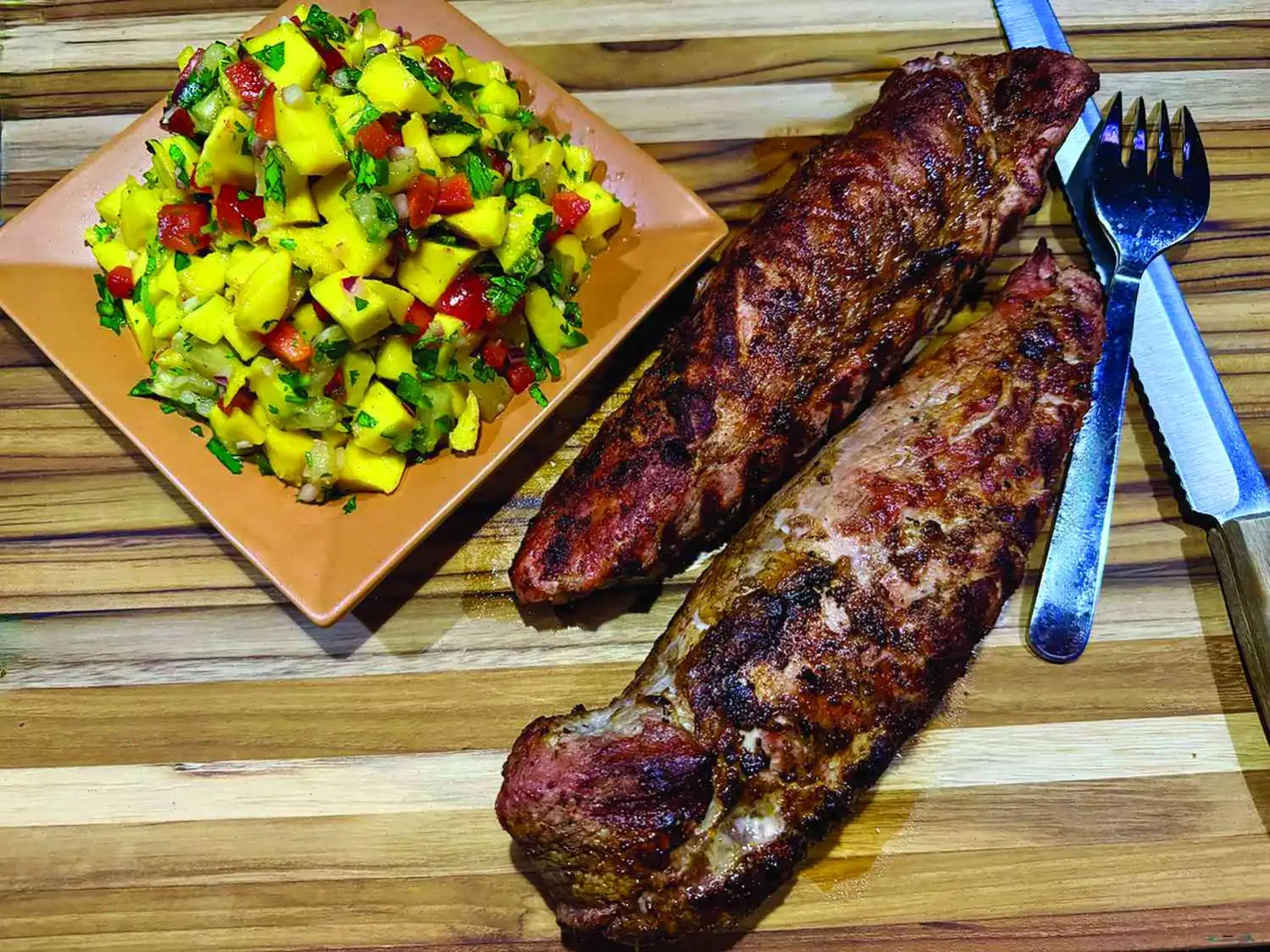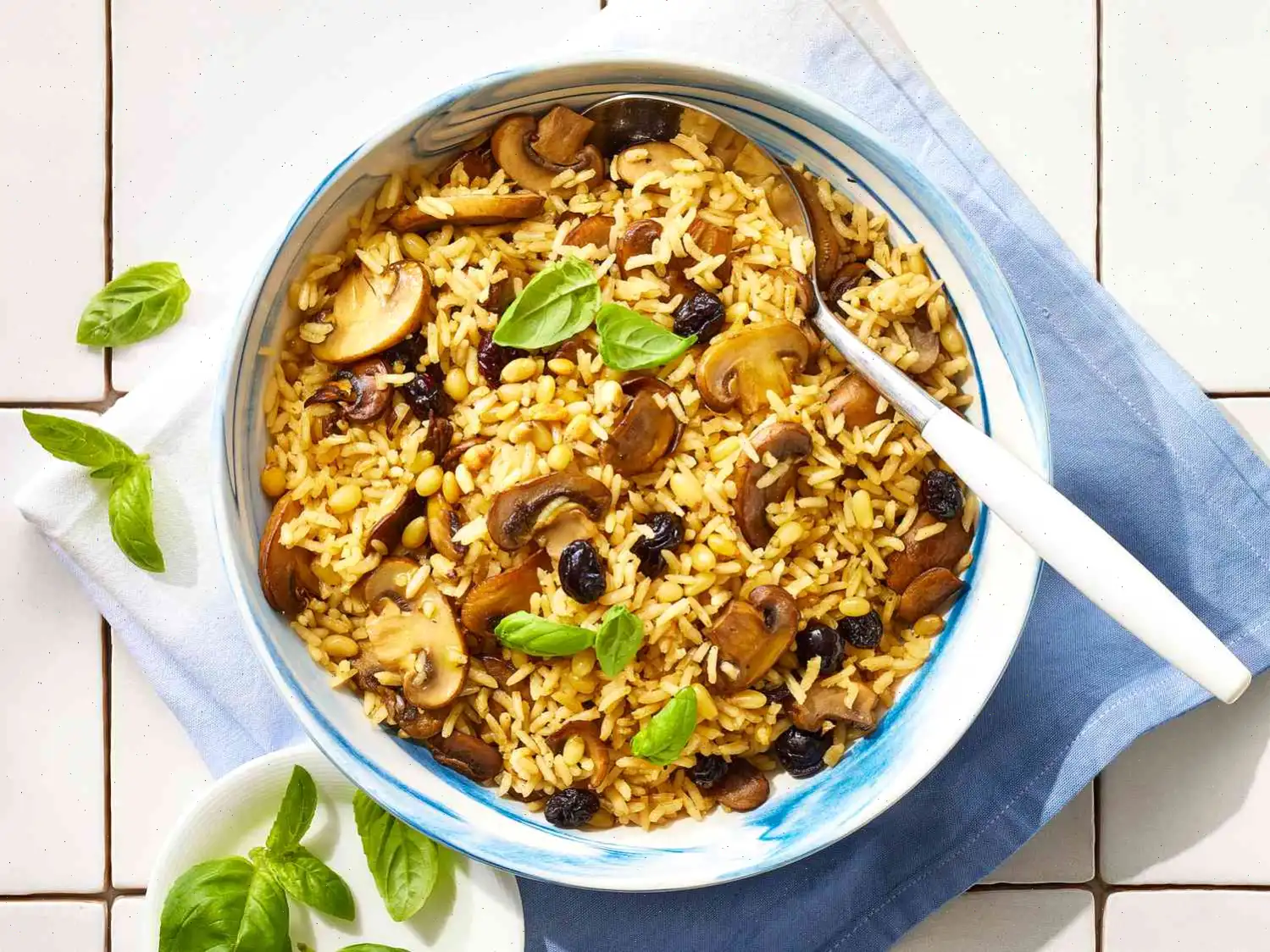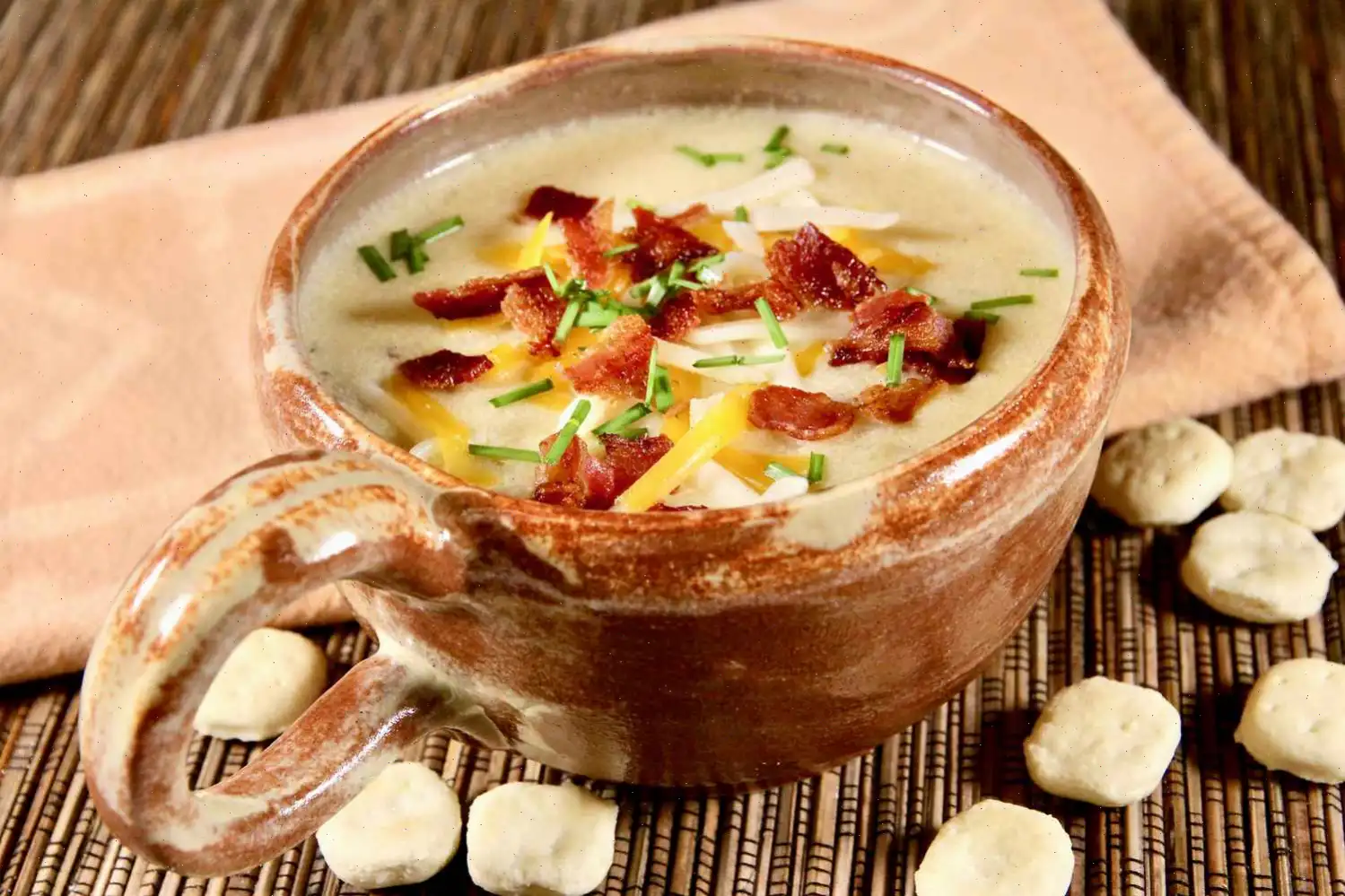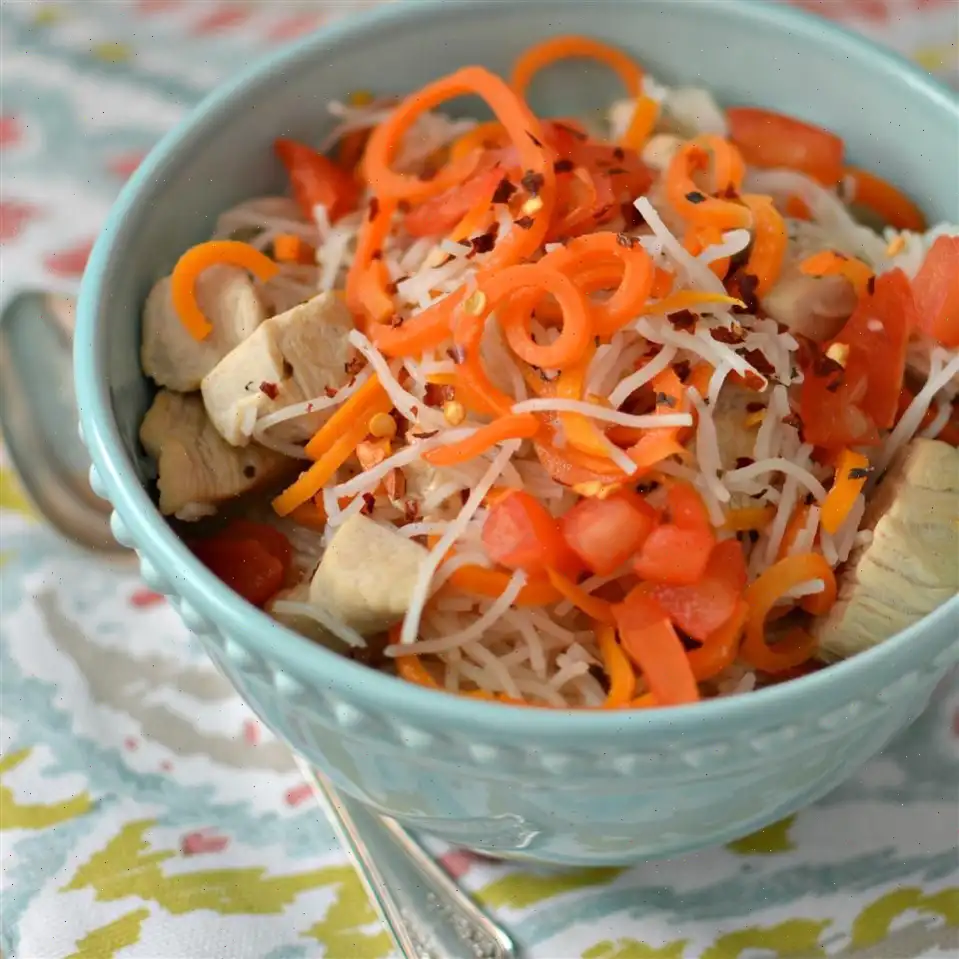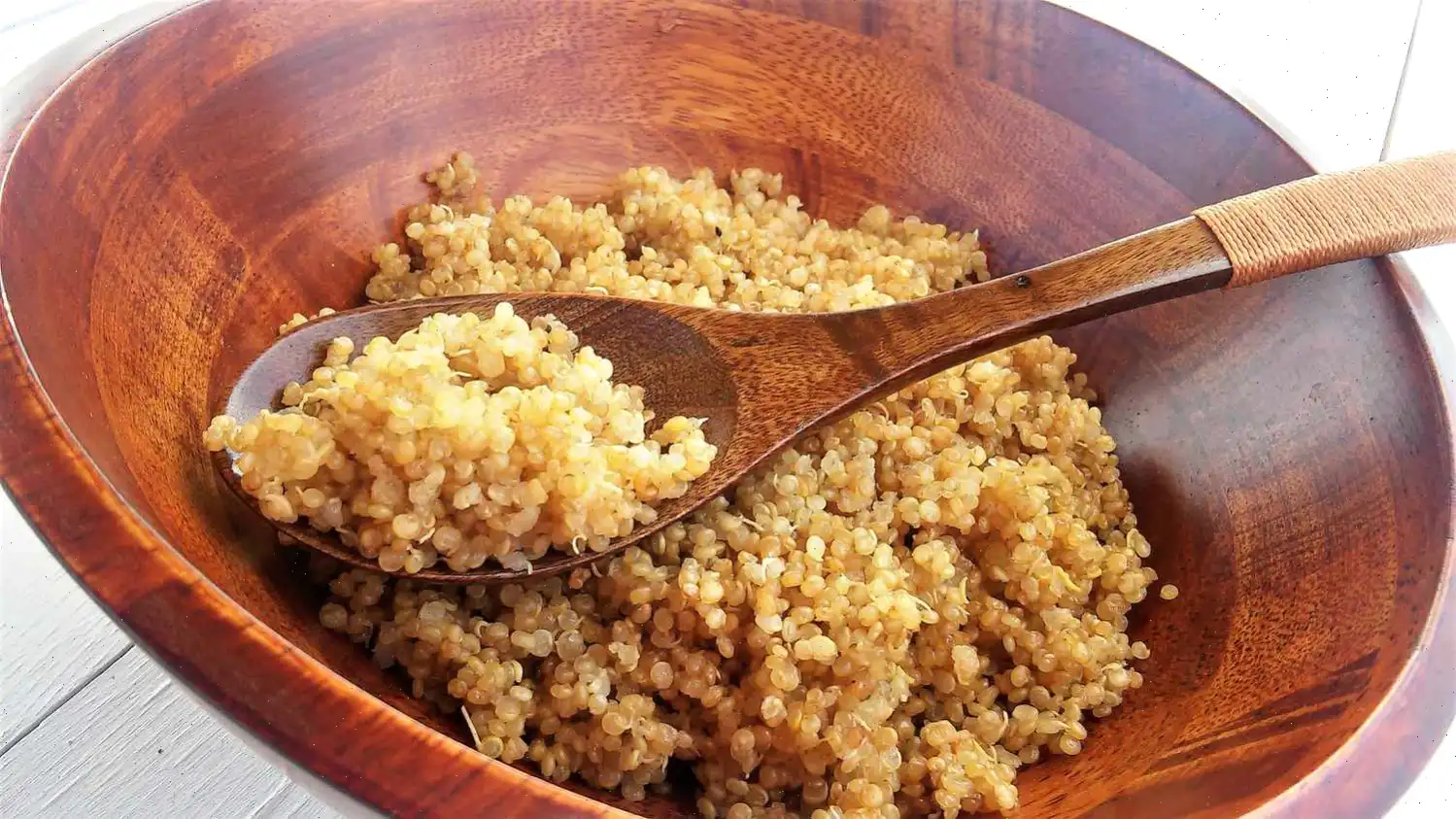
Grilled Pork Tenderloins with Mango-Pineapple Salsa Recipe
Original recipe (1X) yields 8 servings
Ingredients
Tenderloins
- 1 (1 1/4 pound) pork tenderloin
- 2 tablespoons olive oil
- 1 teaspoon ground cumin
- 1/2 teaspoon ground coriander
- 1/2 teaspoon smoked paprika
- 1/2 teaspoon salt, or to taste
- 1/2 teaspoon cayenne pepper (optional)
Salsa
- 2 mangoes, peeled, seeded, and chopped
- 1/2 cup diced red bell pepper
- 1 medium jalapeno pepper, seeded and minced
- 1/2 cup diced pineapple
- 1 lime, zested and juiced
- 1/4 cup minced red onion
- 1 clove garlic, minced
- 1/4 cup minced fresh cilantro
- Salt and pepper to taste
Directions
- Pat the tenderloins dry with paper towels and rub them with olive oil.
- In a small bowl, mix together the cumin, coriander, smoked paprika, salt, and cayenne pepper.
- Evenly sprinkle the spice mixture over both tenderloins and let them sit at room temperature for about 20 minutes.
- Preheat your outdoor grill to 400F (200C), clean the grates, and oil them lightly.
- In a separate bowl, combine the mango, red bell pepper, jalapeno, pineapple, lime zest, lime juice, garlic, and cilantro. Toss everything together and season with salt and pepper. Cover and refrigerate until ready to use.
- Place the tenderloins on the preheated grill and sear them for 1 1/2 to 2 minutes, until grill marks appear. Rotate the tenderloins (without flipping) to create a crisscross pattern, grilling for about 2 minutes more.
- Turn the tenderloins over and repeat the same process on the other side.
- If you're using a gas grill, turn off the heat under half of the grates and move the tenderloins to the unheated side. Close the grill lid and cook the tenderloins indirectly until an instant-read thermometer inserted into the thickest part of the meat reads 140F (60C).
- Remove the tenderloins from the grill and cover with aluminum foil. Let them rest for about 10 minutes, allowing the internal temperature to rise to 145F (63C).
- Slice the tenderloins and serve with the prepared mango salsa.
Nutrition Facts
Per serving (1/8 of recipe):
| Nutrition | Amount | % Daily Value |
|---|---|---|
| Calories | 307 | |
| Total Fat | 9g | 12% |
| Saturated Fat | 2g | 12% |
| Cholesterol | 103mg | 34% |
| Sodium | 253mg | 11% |
| Total Carbohydrate | 18g | 6% |
| Dietary Fiber | 3g | 9% |
| Total Sugars | 12g | |
| Protein | 38g | 76% |
| Vitamin C | 60mg | 67% |
| Calcium | 35mg | 3% |
| Iron | 2mg | 13% |
| Potassium | 831mg | 18% |
* Percent Daily Values are based on a 2,000-calorie diet. Your daily values may be higher or lower depending on your calorie needs.
The Origins and History of Grilled Pork Tenderloins with Mango-Pineapple Salsa
Grilled pork tenderloins paired with tropical fruit salsas have roots in both American and Caribbean culinary traditions. Pork tenderloin itself has long been a favored cut in European cuisine for its tenderness and mild flavor. In the United States, grilling pork became especially popular during the 20th century with the rise of backyard barbecues. The combination of sweet tropical fruits such as mango and pineapple reflects influences from Caribbean and Latin American cooking, where fruit-based sauces are often paired with grilled or roasted meats. This dish exemplifies a fusion of American grilling techniques with vibrant, tropical flavors.
Regional Variations and Distinctive Features
While the base of this recipegrilled pork tenderloinis widely enjoyed across the U.S., regional variations exist. In the southern states, you might find the pork seasoned with a heavier use of smoked paprika or chili powder, while coastal regions may favor citrus marinades and fresher herbs like cilantro. Caribbean adaptations often include rum or allspice in the fruit salsa, giving the dish a more aromatic profile. The versatility of the pork tenderloin allows it to absorb a wide range of flavors, making it a favorite in many regions.
How It Differs from Similar Dishes
Unlike pulled pork or pork chops, grilled tenderloins are lean and cook relatively quickly. The tropical salsa differentiates this dish from standard barbecue pork, which often relies on tomato-based or vinegar-based sauces. The combination of mango, pineapple, jalapeo, and lime provides a balance of sweetness, acidity, and mild heat that is unique to this preparation. While some may use similar fruits in chicken or fish dishes, pairing them with a tender pork cut creates a distinct flavor and texture experience.
Typical Serving Occasions
This dish is commonly served at summer barbecues, outdoor gatherings, or festive dinners. It pairs well with light sides such as grilled vegetables, rice, or leafy salads. Restaurants with a focus on contemporary American cuisine or tropical-themed menus may feature it as a main entre, often garnished with additional fresh herbs or a citrus wedge. It is equally popular as a home-cooked meal due to its relatively short preparation and cooking time.
Interesting Facts
- Pork tenderloin is one of the leanest cuts of meat, yet it remains incredibly tender when cooked properly.
- The combination of mango and pineapple in salsas not only adds sweetness but also contains natural enzymes that can help tenderize meat.
- This dish exemplifies the growing trend of fusion cuisine, blending American grilling techniques with tropical flavors.
- Grill marks on the tenderloin not only create visual appeal but also enhance the flavor through the Maillard reaction, which caramelizes the surface.
- The recipe is adaptable for indoor cooking using a grill pan or oven broiler, making it accessible year-round.


